- Effortless Strawberry Planting: An Overview
- Preparing the Soil
- 1. Soil Testing
- 2. Clearing the Area
- 3. Soil Amendments
- 4. Tilling the Soil
- 5. Weed Control
- 6. Fertilization
- 7. Irrigation
- Choosing the Right Variety
- Spacing and Layout
- Planting Techniques: How to Maximize Efficiency
- 1. Proper Site Selection
- 2. Preparing the Soil
- 3. Planting in Raised Beds
- 4. Using Drip Irrigation
- 5. Proper Plant Spacing
- 6. Mulching
- 7. Fertilization
- 8. Regular Maintenance
- Care and Maintenance
- 1. Watering
- 2. Fertilizing
- 3. Mulching
- 4. Pest and Disease Control
- 5. Pruning
- 6. Winter Protection
- Harvesting and Storage
- 1. Harvesting
- 2. Storage
- 3. Preserving
- Question-answer:
- What is the best time of year to plant strawberries?
- How should I prepare the soil for planting strawberries?
- How far apart should I plant my strawberry bushes?
- Can I plant strawberries in containers?
- What are some common mistakes to avoid when planting strawberries?
- Video: How to Grow Strawberries from Planting to Harvest
Are you ready to take your strawberry farming to the next level? With our easy planting technique, you can learn how to effortlessly plant up to 3000 strawberry bushes in just one day. This efficient method will not only save you time and energy, but it will also ensure a successful harvest.
Why is planting strawberries so important?
Strawberries are a popular and lucrative crop, known for their delicious taste and high demand. However, planting strawberries can be a labor-intensive process that requires careful attention to detail. By mastering our easy planting technique, you can streamline the process and maximize your productivity.
How does our effortless planting technique work?
Our technique is based on a simple yet powerful principle: proper preparation. By preparing the soil, selecting the right strawberry varieties, and following our step-by-step planting guide, you can transform the planting process into a seamless operation. We will share our expert tips and tricks to help you achieve optimal results.
Whether you are a seasoned farmer looking to increase your strawberry production or a beginner eager to learn the ropes, our effortless planting technique is the perfect solution. Don’t waste any more time struggling with traditional planting methods – join us and revolutionize your strawberry farming today!
Effortless Strawberry Planting: An Overview

Effortless strawberry planting is a technique that allows you to plant a large number of strawberry bushes quickly and efficiently. With this method, you can plant up to 3000 strawberry bushes in a single day.
To begin, you will need to gather the necessary materials. This includes strawberry plants, compost, mulch, and a shovel or trowel for digging holes. It’s also helpful to have a team of helpers to assist with the planting process.
The first step in effortless strawberry planting is to prepare the soil. Choose a location that receives full sun and has well-drained soil. Remove any weeds or grass from the planting area, and then spread a layer of compost over the soil. This will help to enrich the soil and provide nutrients for the strawberry plants.
Next, you will need to dig holes for the strawberry plants. The holes should be spaced approximately 1 foot apart in rows that are 2 feet apart. Use a shovel or trowel to dig holes that are deep enough to accommodate the roots of the strawberry plants.
Once the holes are dug, it’s time to plant the strawberry bushes. Remove the strawberry plants from their containers, being careful not to damage the roots. Place each plant in a hole, making sure that the roots are spread out and covered with soil. Gently firm the soil around each plant to secure it in place.
After all of the strawberry plants have been planted, it’s important to provide them with a layer of mulch. This will help to retain moisture in the soil and suppress weed growth. Spread a layer of mulch around each plant, making sure to leave a small space around the base of the plant to allow for air circulation.
Finally, it’s important to water the newly planted strawberry bushes thoroughly. This will help to settle the soil around the roots and ensure that the plants receive the moisture they need to establish themselves. Water the plants regularly, especially during hot, dry weather.
Effortless strawberry planting is an effective and efficient way to establish a large strawberry patch. By following these steps, you can plant up to 3000 strawberry bushes in a single day, allowing you to enjoy a bountiful harvest of fresh strawberries.
Preparing the Soil
Before planting strawberries, it is important to prepare the soil to ensure optimal growth and productivity of the plants. Here are some steps to follow in order to properly prepare the soil for planting strawberries:
1. Soil Testing
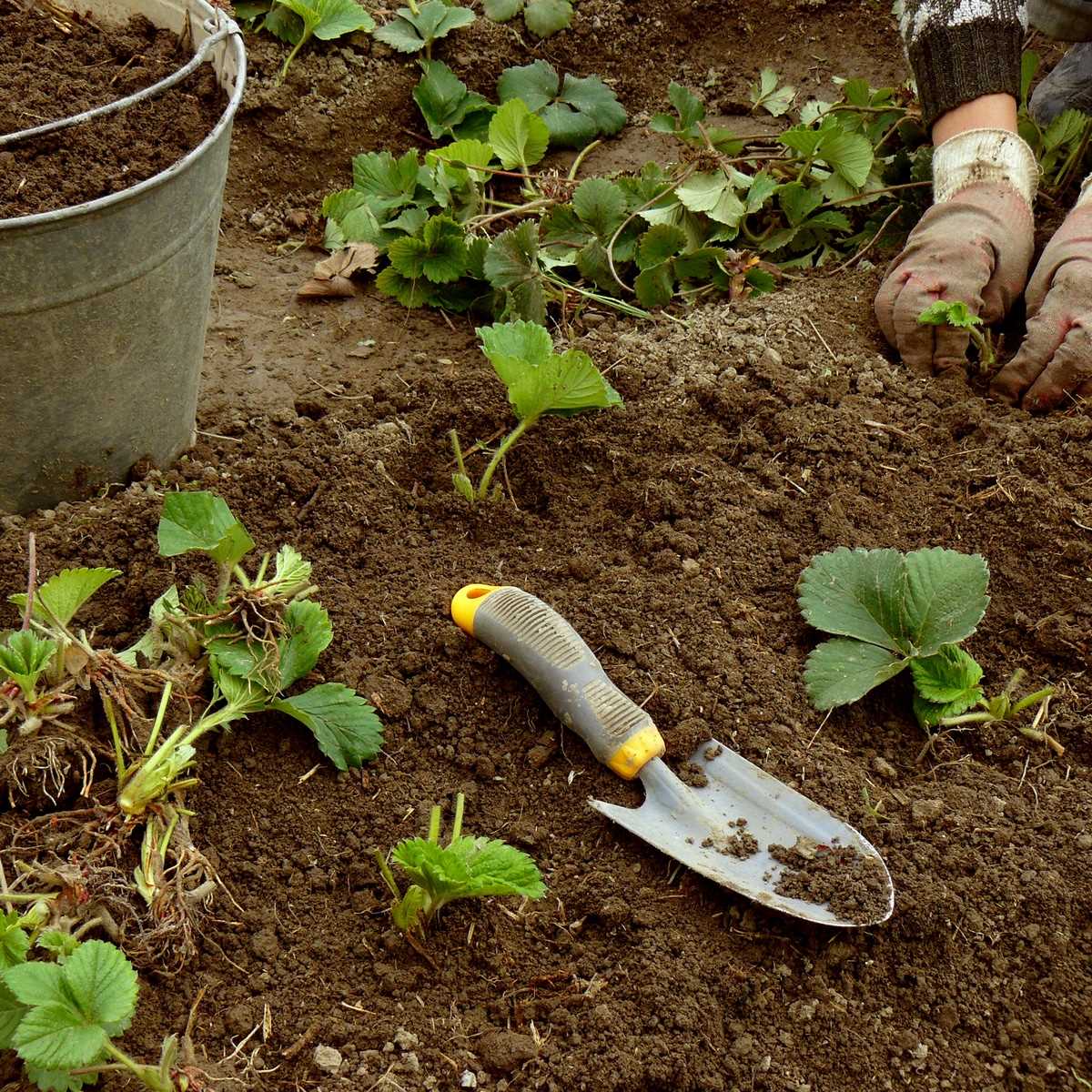
Start by conducting a soil test to determine its pH level and nutrient content. Strawberries prefer slightly acidic soil with a pH range of 5.5 to 6.5. The soil test will also indicate if any deficiencies or imbalances need to be addressed before planting.
2. Clearing the Area
Remove any weeds, rocks, or debris from the planting area. Tidy the site to create a clean and uniform planting space for the strawberry plants.
3. Soil Amendments
If the soil test indicates any deficiencies, amendments can be added to improve the soil quality. Common amendments for strawberries include organic matter such as compost or well-rotted manure, which can improve drainage and fertility.
4. Tilling the Soil
Using a garden tiller or a hand tool, loosen the soil to a depth of at least 8 to 10 inches. This will break up any compacted layers and create a loose, well-aerated soil environment for the strawberry roots to grow.
5. Weed Control
Prevent weed growth by removing any existing weeds and using mulch or a weed barrier. Mulching with straw or a biodegradable weed barrier will help suppress weed growth, conserve moisture, and maintain an even soil temperature.
6. Fertilization
Based on the soil test results, apply a balanced fertilizer that provides essential nutrients for healthy strawberry growth. Follow the recommended application rates, taking care not to over-fertilize.
7. Irrigation
Ensure that the planting area has a proper irrigation system in place. Strawberries require consistent moisture, but excessive water can lead to root rot. Installing a drip irrigation system or using soaker hoses can help deliver water directly to the root zone while minimizing water waste.
By following these steps and preparing the soil before planting, you can create an ideal environment for your strawberry plants to thrive and produce a bountiful harvest.
Choosing the Right Variety
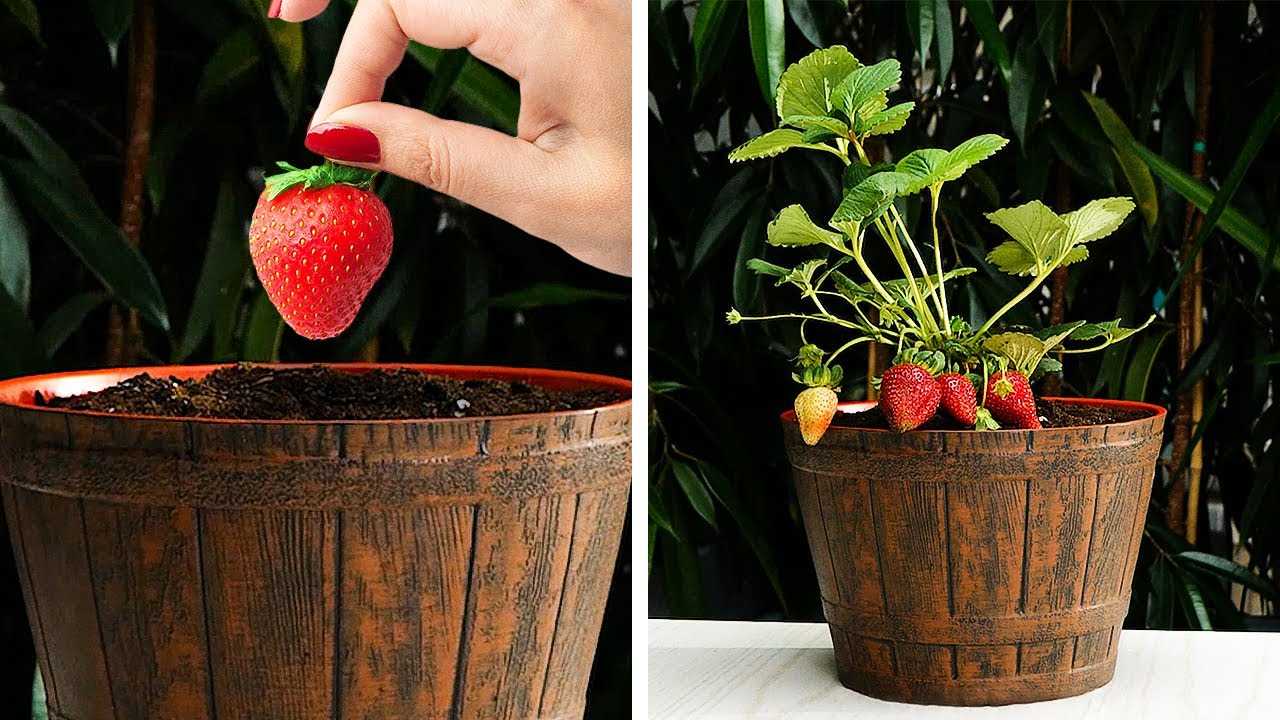
When it comes to planting strawberries, choosing the right variety is crucial for your success. There are several factors to consider when making this decision:
- Growing conditions: Some varieties of strawberries are better suited for specific growing conditions. Consider factors such as temperature, soil acidity, and sunlight exposure when selecting your variety.
- Size and flavor: Different varieties of strawberries vary in size and flavor. Some are large and sweet, while others are smaller and tangier. Think about your preferences and the preferences of your customers if you are growing strawberries for commercial purposes.
- Yield: The yield of strawberries can vary depending on the variety. If you are looking for a high-yielding variety, look for one that is known for producing a large number of berries per plant.
Here are a few popular strawberry varieties to consider:
| Variety | Characteristics |
|---|---|
| June-bearing | Produces one large crop of strawberries in early summer. |
| Everbearing | Produces multiple crops throughout the growing season. |
| Day-neutral | Produces strawberries continuously throughout the season. |
It is also worth considering disease resistance when choosing a variety. Some strawberries are more resistant to diseases such as fungal infections and viruses, which can greatly impact the success of your crop.
Consult with a local expert or nursery to determine which varieties are best suited for your specific growing conditions and goals. By choosing the right variety, you can set yourself up for a successful and bountiful strawberry harvest.
Spacing and Layout
When planting strawberries, it is important to consider the spacing and layout of your plants. Proper spacing ensures that each plant has enough room to grow and receive adequate sunlight and air circulation. Here are some tips on spacing and layout for your strawberry plants:
- Row spacing: Leave about 3 to 4 feet of space between rows. This allows enough room for walking and tending to the plants. It also ensures that the plants receive proper air circulation, which helps prevent diseases.
- Plant spacing within rows: Space the plants about 12 to 18 inches apart within each row. This distance allows the plants to grow and spread without overcrowding. Overcrowding can lead to competition for sunlight, nutrients, and water, which can negatively impact the growth and productivity of the plants.
- Plant arrangement: Plant the strawberry plants in a staggered pattern within each row. This arrangement maximizes the use of space and allows each plant to receive enough sunlight. It also helps to prevent the spread of diseases, as air can flow freely between the plants.
It is also important to consider the layout of your strawberry planting area. Here are some layout options to consider:
- Single-row layout: This layout involves planting a single row of strawberry plants. It is suitable for small gardens or for gardeners who are planting strawberries for home use.
- Double-row layout: In this layout, you plant two parallel rows of strawberry plants, with a narrow space between the rows. This layout maximizes the use of space and allows for higher yields.
- Raised bed layout: Planting strawberries in raised beds helps improve drainage and reduces the risk of soil-borne diseases. This layout is suitable for gardeners who have limited space or poor soil conditions.
Consider the available space, your gardening goals, and your specific site conditions when deciding on the spacing and layout for your strawberry plants. With proper spacing and layout, you can ensure optimal growth, productivity, and overall success with your strawberry planting.
Planting Techniques: How to Maximize Efficiency
When it comes to planting strawberries, maximizing efficiency is crucial to ensure productivity and profitability. Here are some planting techniques that can help you achieve this goal:
1. Proper Site Selection
Choosing the right site for planting strawberries is essential. Look for well-drained soil with a pH level between 5.5 and 6.5. It is also important to select a location that receives full sun for at least six hours a day.
2. Preparing the Soil
Before planting, make sure to prepare the soil properly. Remove all weeds and grass from the area and amend the soil with organic matter, such as compost or well-rotted manure. This will improve soil structure, drainage, and fertility.
3. Planting in Raised Beds
Planting strawberries in raised beds can help maximize efficiency. The raised beds provide better drainage and prevent the soil from becoming too compacted. This allows the plants to establish a strong root system and improves overall plant health.
4. Using Drip Irrigation
Drip irrigation is a highly efficient method of watering strawberries. It delivers water directly to the plants’ roots, minimizing evaporation and water waste. This technique also helps prevent foliar diseases by keeping the leaves dry.
5. Proper Plant Spacing
To maximize efficiency, ensure proper plant spacing. The recommended spacing for strawberries is 12 to 18 inches apart in rows that are 3 to 4 feet apart. This allows for adequate air circulation and sunlight penetration, reducing the risk of disease and improving fruit quality.
6. Mulching
Applying mulch around the strawberry plants helps control weeds, retain moisture, and regulate soil temperature. This reduces the need for manual weeding and watering, saving time and effort in the long run.
7. Fertilization
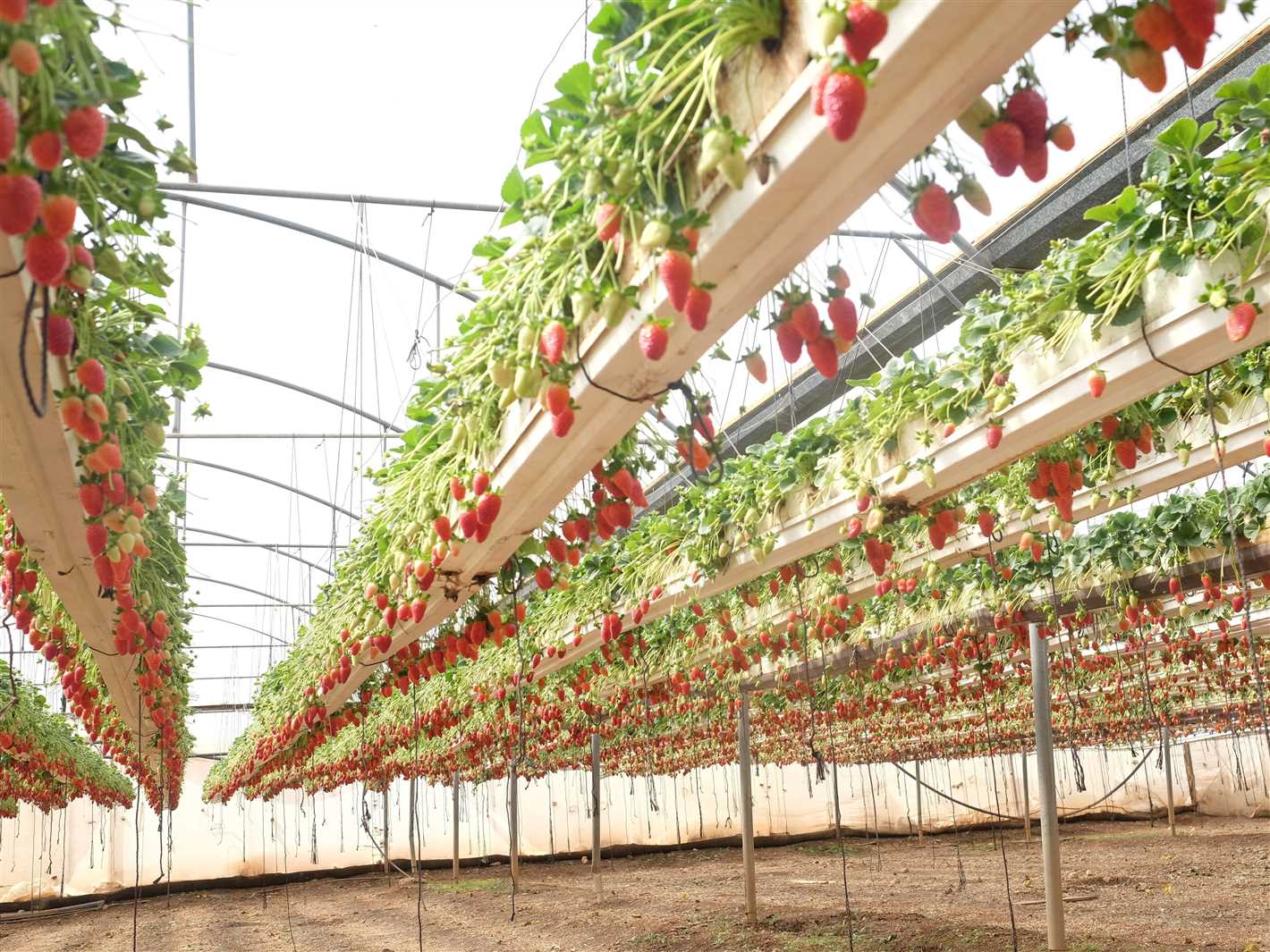
Proper fertilization is essential for the healthy growth of strawberry plants. Conduct a soil test to determine the nutrient levels and apply fertilizer accordingly. It is advisable to use a slow-release organic fertilizer to avoid excessive nutrient leaching.
8. Regular Maintenance
Regular maintenance tasks, such as pruning runners, removing diseased leaves, and monitoring for pests, are crucial for maximizing efficiency. By addressing these issues promptly, you can prevent the spread of diseases, promote healthy plant growth, and ensure optimum fruit production.
By following these planting techniques, you can maximize efficiency in your strawberry planting process, leading to increased productivity and profitability.
Care and Maintenance
Proper care and maintenance are essential for ensuring the health and productivity of your strawberry plants. Follow these guidelines to keep your plants thriving:
1. Watering
- Strawberry plants require regular watering, especially during dry periods.
- Water deeply to ensure that the soil is thoroughly moistened.
- Avoid overwatering, as it can lead to root rot and other diseases.
- Consider using a drip irrigation system to provide consistent moisture without wetting the leaves.
2. Fertilizing
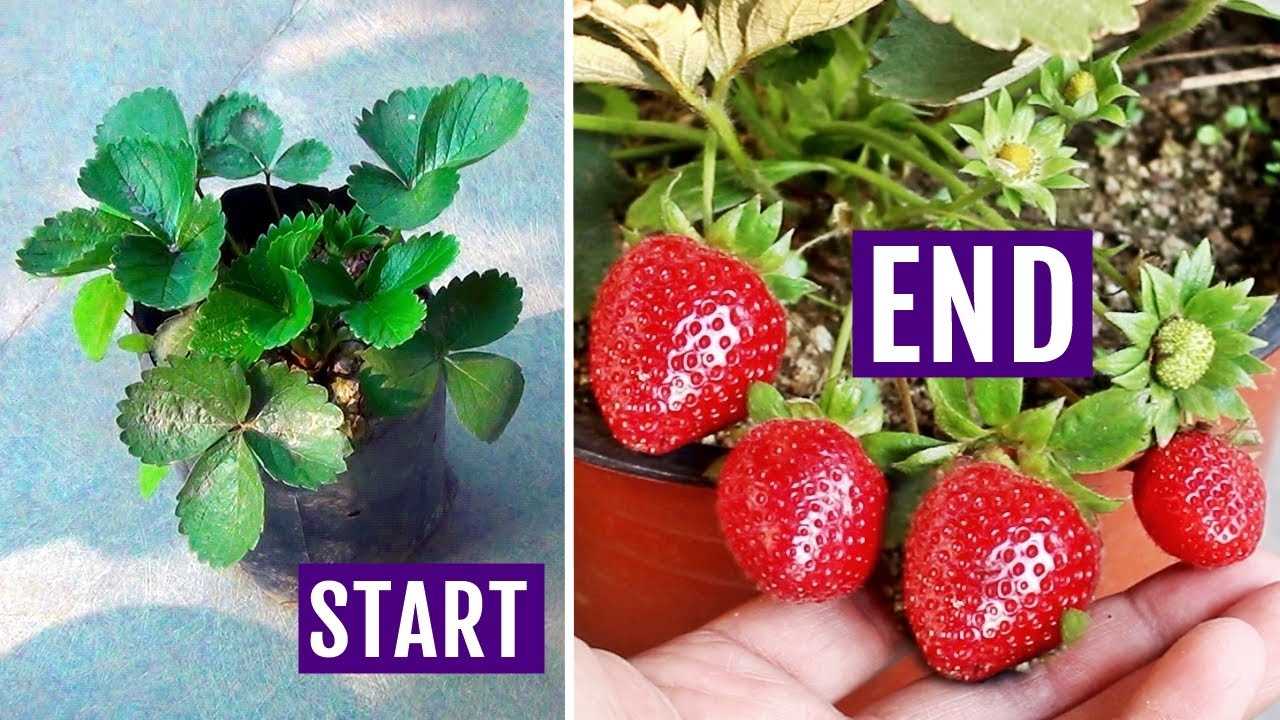
- Apply a balanced fertilizer, such as a 10-10-10 or 14-14-14 formula, before planting.
- After planting, apply additional fertilizer every four to six weeks throughout the growing season.
- Be careful not to over-fertilize, as this can result in excessive foliage growth at the expense of fruit production.
3. Mulching
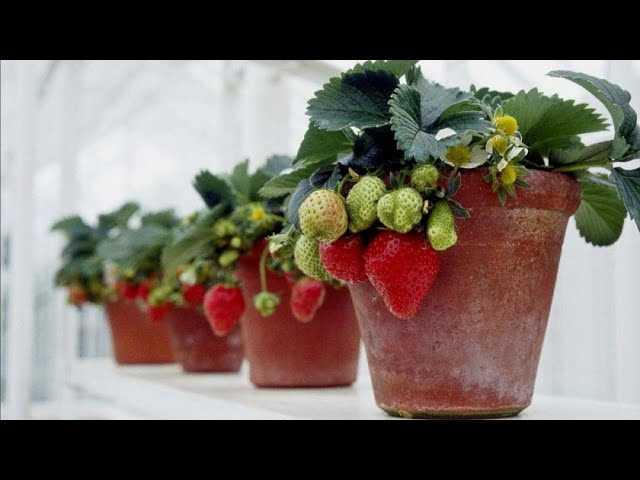
- Apply a layer of mulch around the base of the plants to help conserve moisture, suppress weeds, and regulate soil temperature.
- Straw, pine straw, or shredded leaves make excellent mulches for strawberries.
- Avoid piling mulch directly against the plants, as this can promote rot and disease.
4. Pest and Disease Control
- Monitor your strawberry plants regularly for signs of pests and diseases.
- Common pests include aphids, slugs, and strawberry root weevils.
- To control pests, consider using natural remedies like insecticidal soap or companion planting with beneficial flowers.
- Common diseases that affect strawberries include gray mold, powdery mildew, and leaf spot.
- Remove and destroy any infected plants or leaves to prevent the spread of disease.
5. Pruning
- Pruning is an important part of maintaining the health and productivity of strawberry plants.
- Remove any dead or diseased leaves, as well as runners that are not needed for propagation.
- Regularly thin out overcrowded plants to improve airflow and reduce the risk of disease.
6. Winter Protection
- Strawberry plants need protection during the winter months, especially in colder climates.
- Apply a layer of straw or pine straw around the plants once they have gone dormant.
- This mulch will help insulate the plants and protect them from freezing temperatures.
By following these care and maintenance guidelines, you can enjoy healthy strawberry plants and a bountiful harvest for years to come.
Harvesting and Storage
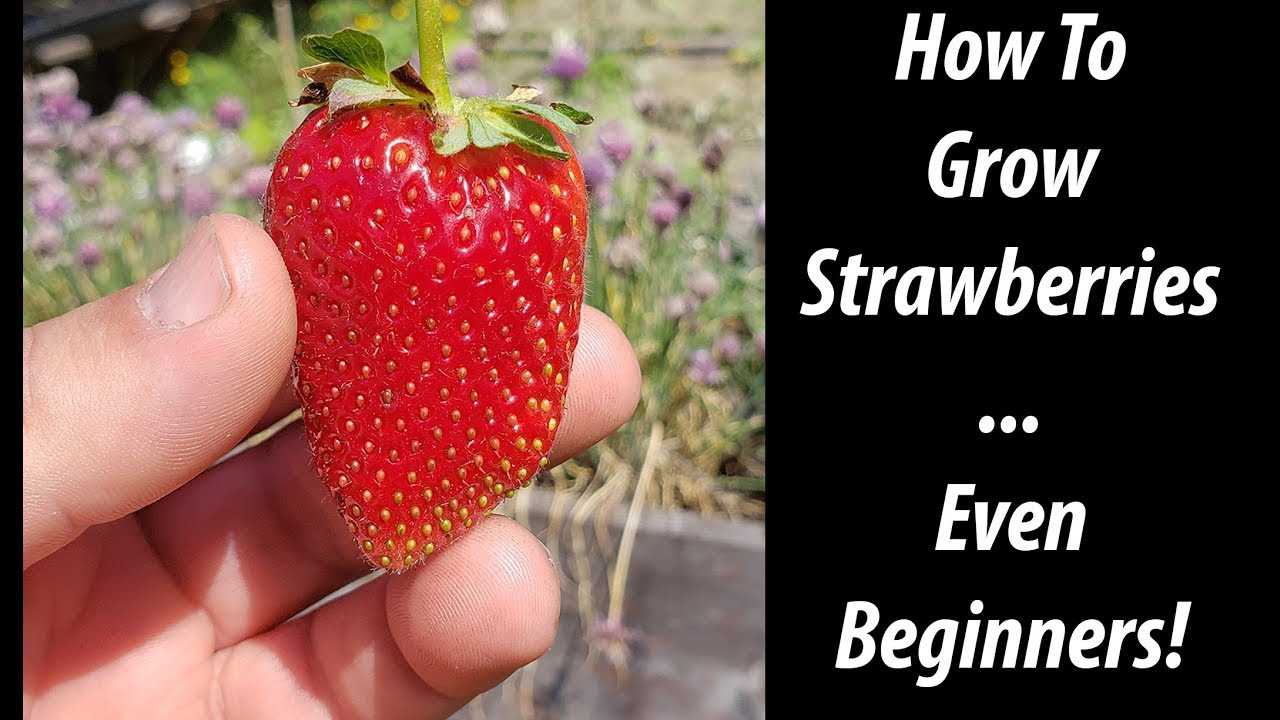
Once your strawberry plants have reached their peak ripeness, it’s time to harvest the delicious fruits. Here are some tips on how to harvest and store your strawberries:
1. Harvesting
- Strawberries are ready to harvest when they are fully red and have a glossy appearance. Avoid picking them when they are still green or partially green, as they will not ripen after being harvested.
- Gently twist or pinch the stem of the strawberry and pull it to detach it from the plant. Be careful not to pull too hard, as this can damage the plant.
- Avoid piling the harvested strawberries on top of each other, as this can cause bruising and spoilage. Instead, place them in a shallow container to prevent squishing.
2. Storage
- For short-term storage, place the harvested strawberries in the refrigerator. Make sure to keep them in a single layer to prevent them from getting squished or crushed.
- Strawberries can also be frozen for longer-term storage. Before freezing, remove the stems and wash the berries. Spread them out on a baking sheet and place them in the freezer until they are completely frozen. Then, transfer them to a freezer-safe bag or container.
- Frozen strawberries can be used in a variety of recipes, such as smoothies, jam, or baked goods. Remember to thaw them before use.
3. Preserving
If you have an abundance of strawberries and want to preserve them for future use, consider making strawberry jam or jelly. Follow a reliable recipe and can the jars properly for long shelf life.
By following these harvesting and storage tips, you can enjoy the sweet taste of fresh strawberries long after the harvest season is over.
Question-answer:
What is the best time of year to plant strawberries?
The best time to plant strawberries is in the early spring, after the last frost has passed. This allows the plants to establish their root systems before the hot summer weather.
How should I prepare the soil for planting strawberries?
Before planting strawberries, it is important to prepare the soil properly. Start by removing any weeds or grass from the planting area. Then, loosen the soil and work in compost or aged manure to improve its fertility. Finally, level the soil and create planting rows or beds.
How far apart should I plant my strawberry bushes?
The spacing between strawberry plants will depend on whether you are growing them in rows or in a bed system. For rows, space the plants about 18 to 24 inches apart, with rows spaced 3 feet apart. In a bed system, you can plant the strawberries closer together, with plants spaced about 12 inches apart in all directions.
Can I plant strawberries in containers?
Yes, strawberries can be grown in containers, which is a great option for gardeners with limited space. Choose a container that is at least 12 inches in diameter and has good drainage. Fill the container with a well-draining potting mix and plant the strawberries as you would in the ground. Make sure to water them regularly and provide adequate sunlight.
What are some common mistakes to avoid when planting strawberries?
Some common mistakes to avoid when planting strawberries include planting them too deep, not providing enough sunlight, overcrowding the plants, and not properly preparing the soil. It is also important to choose disease-resistant varieties and to water the plants consistently.







